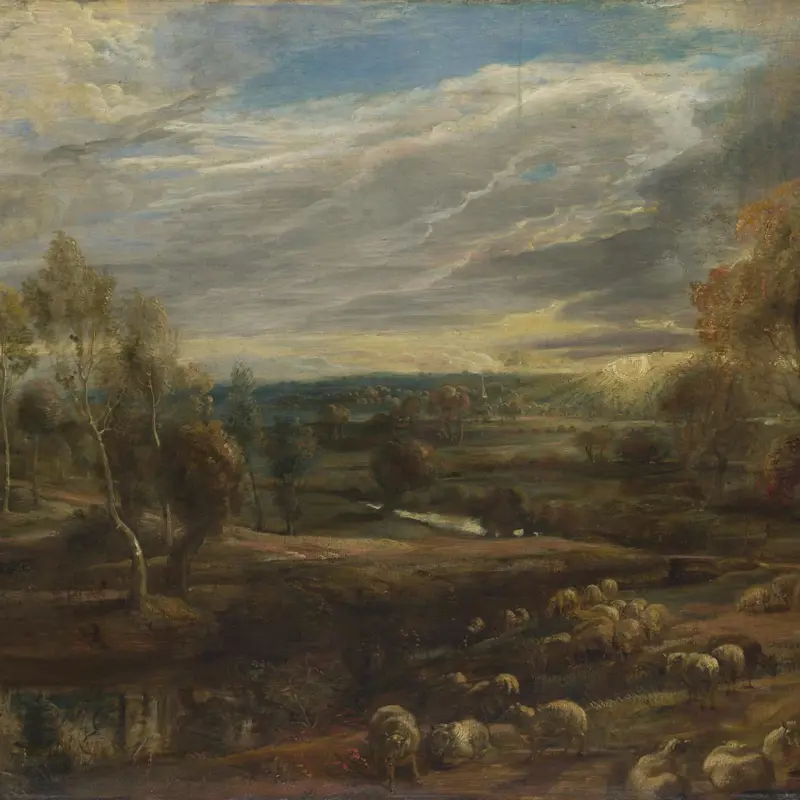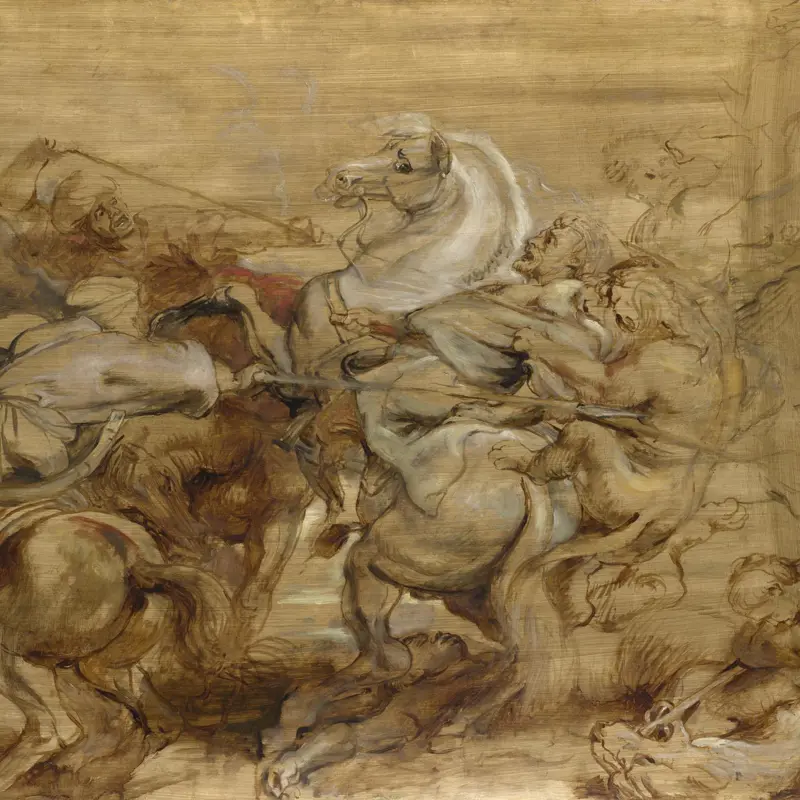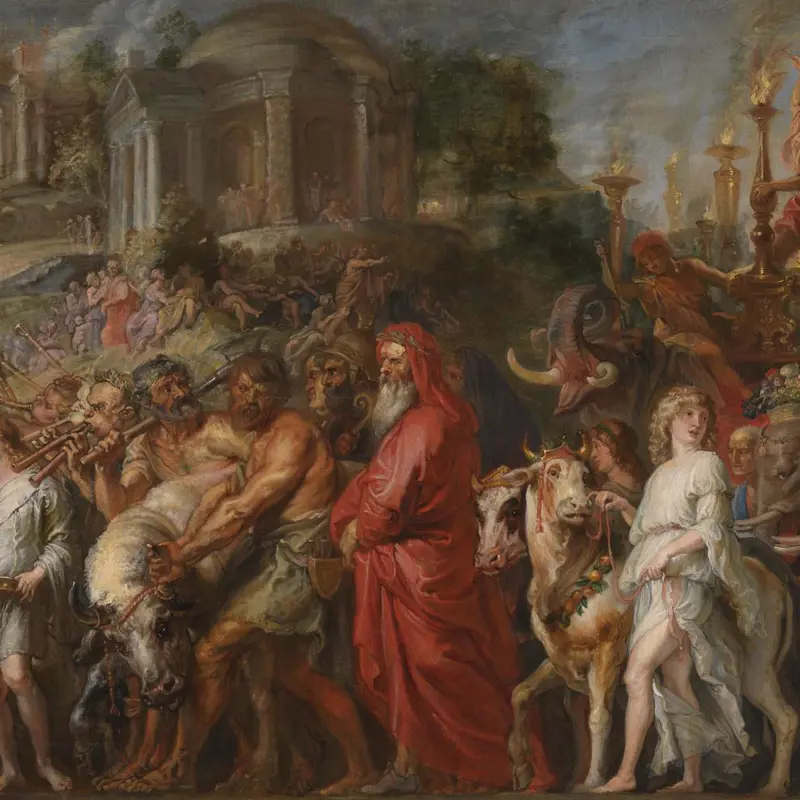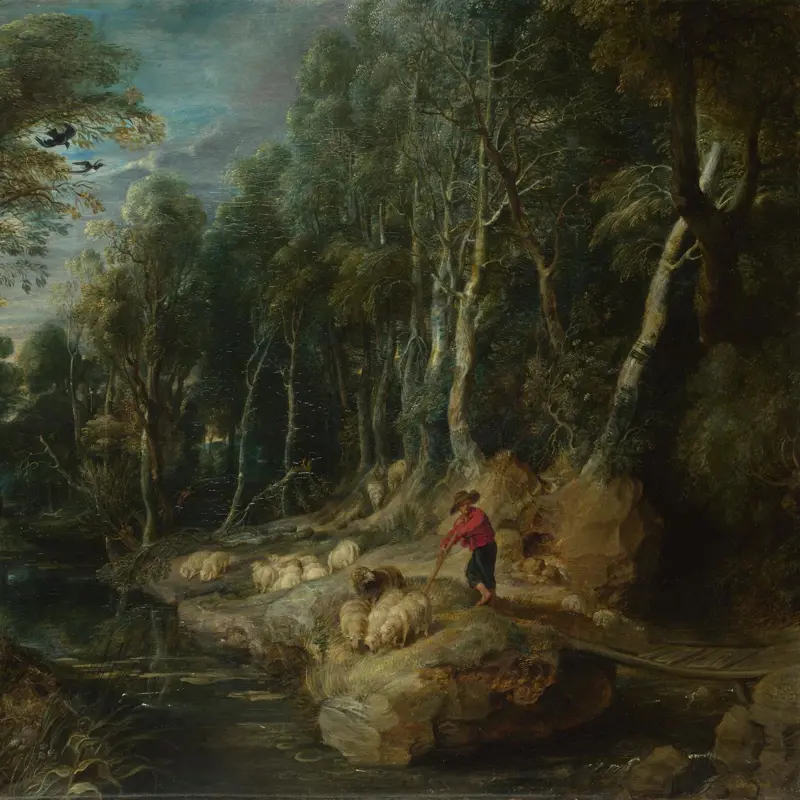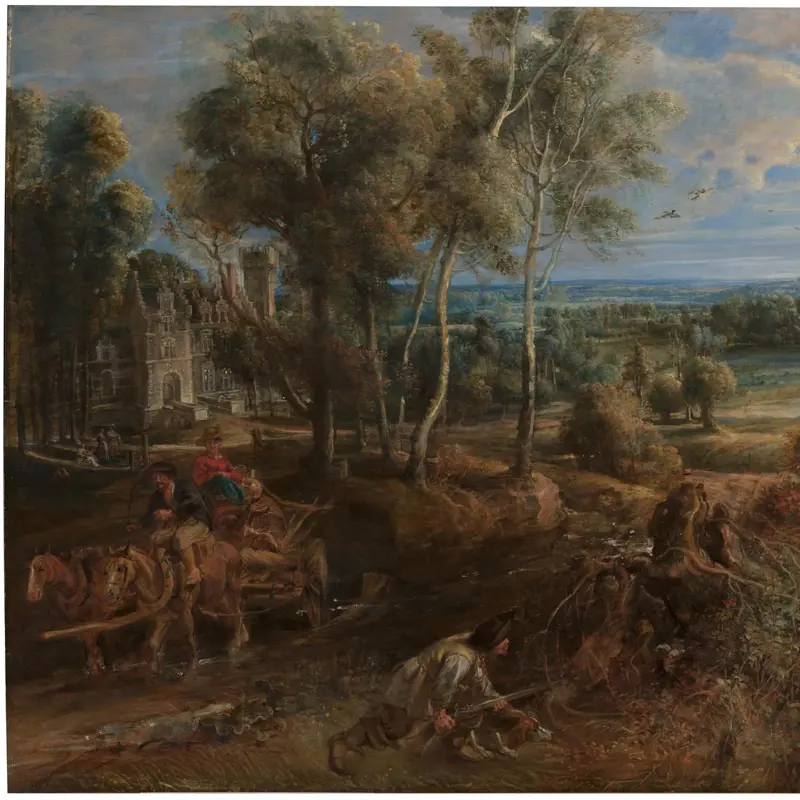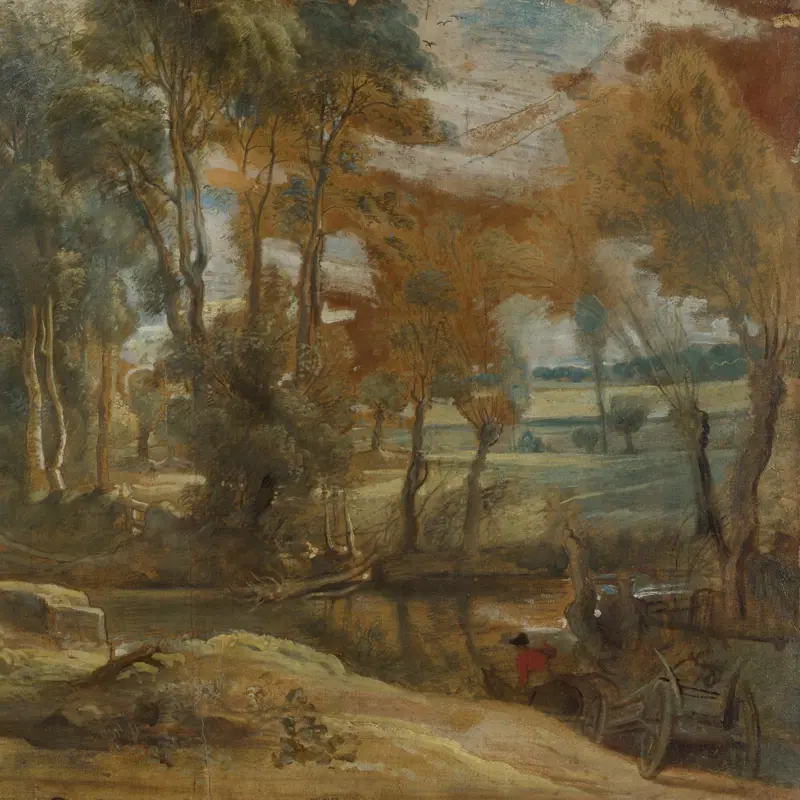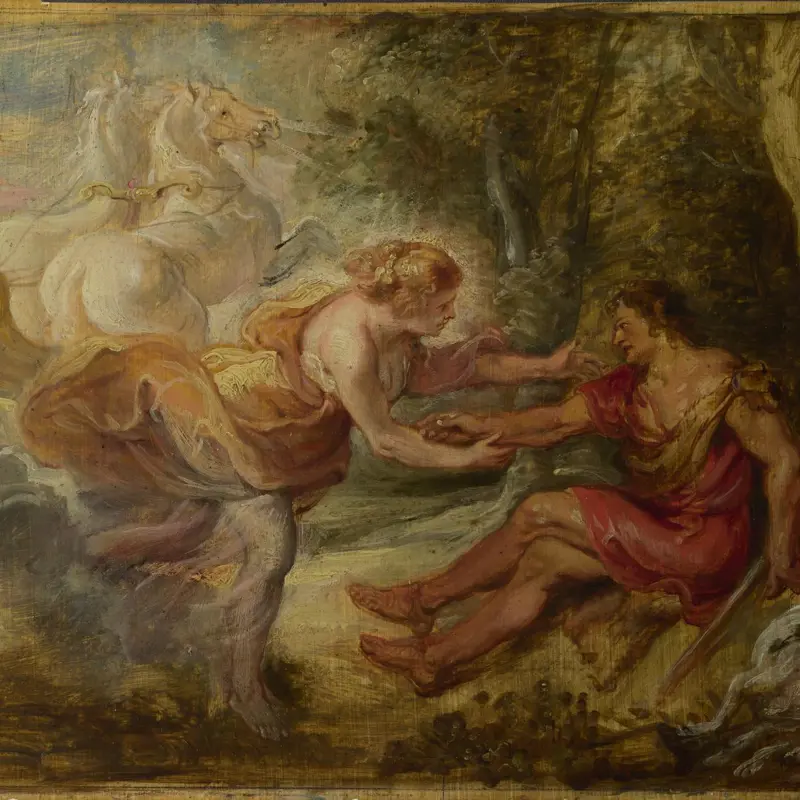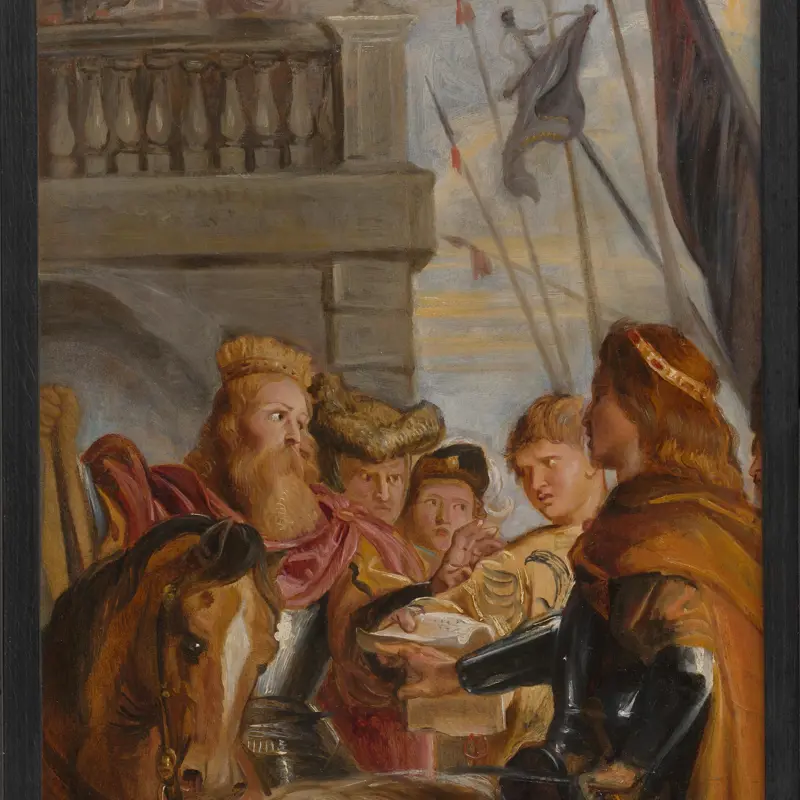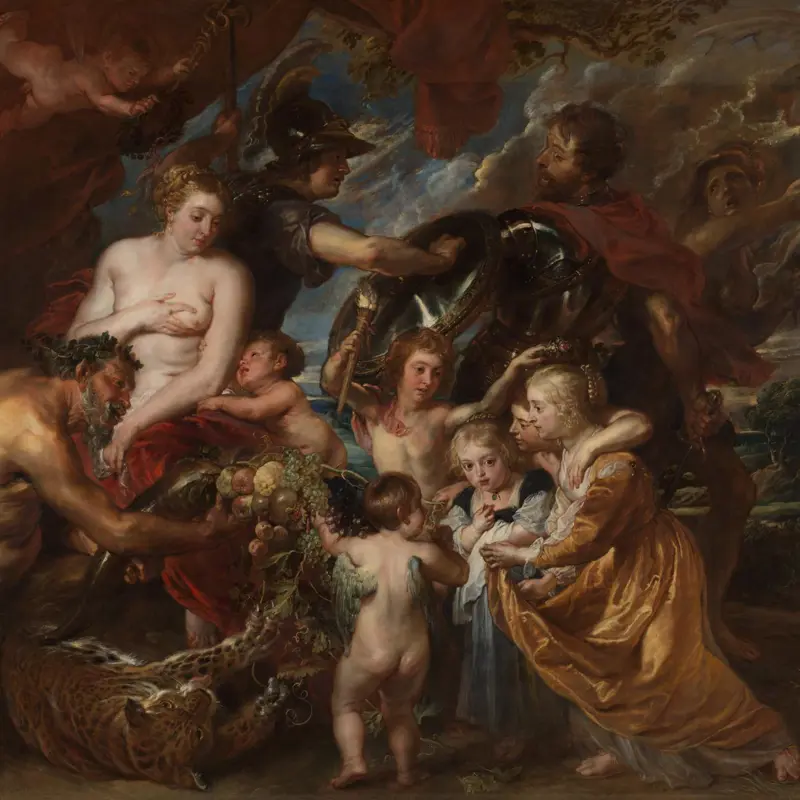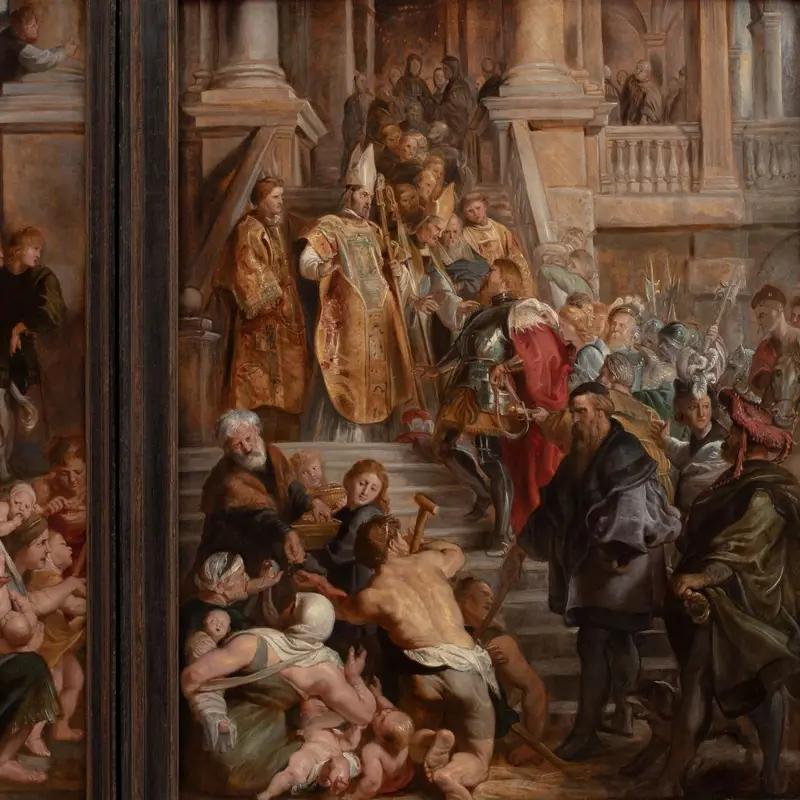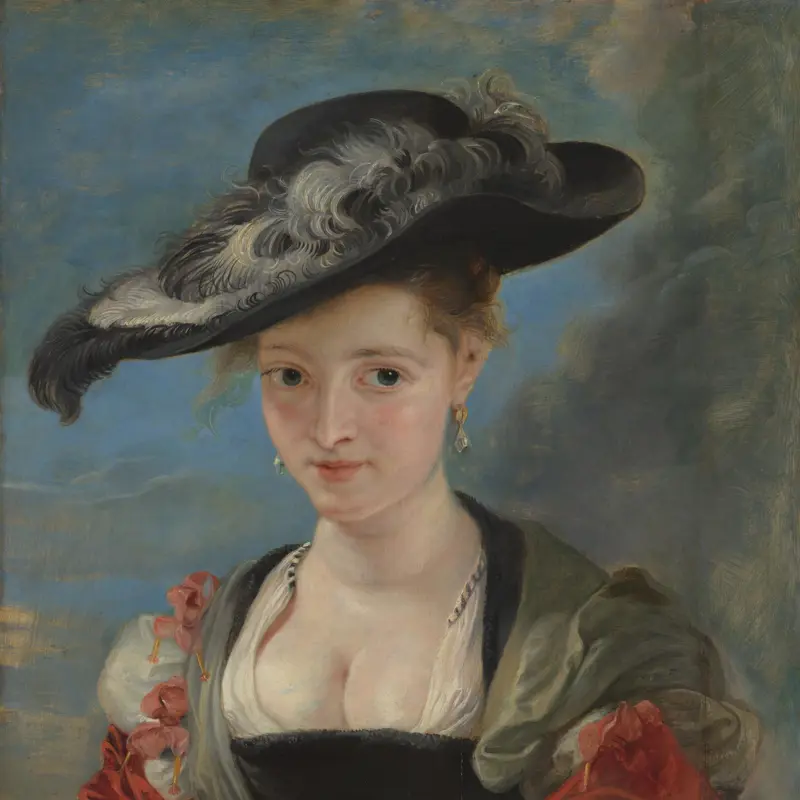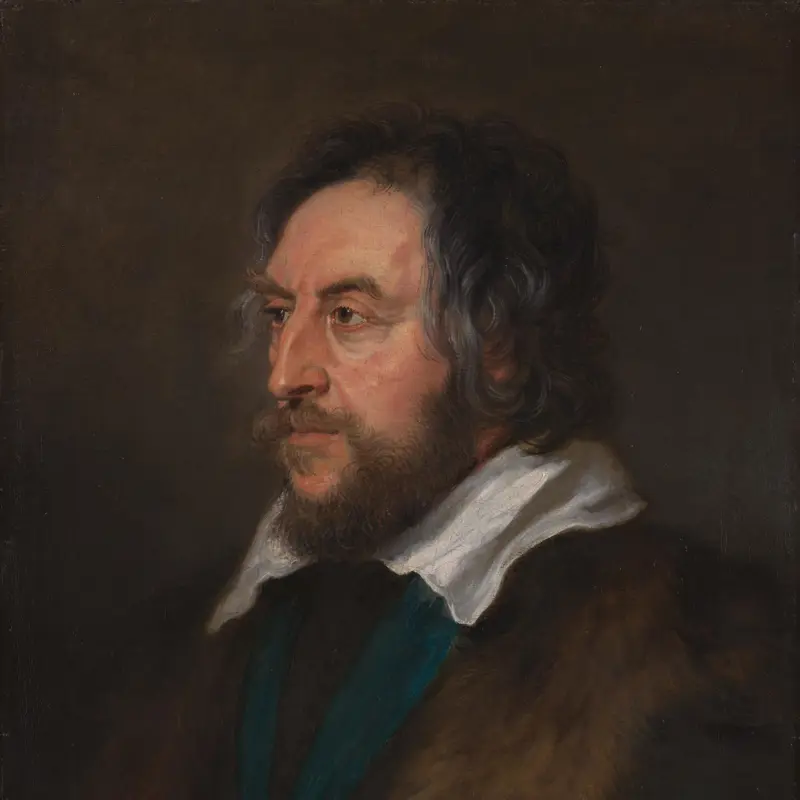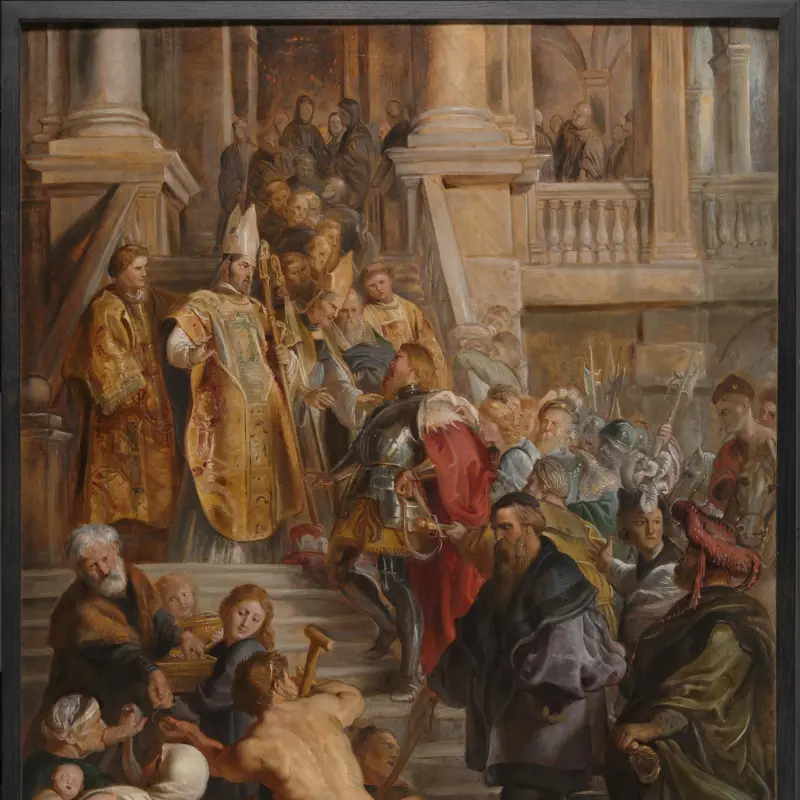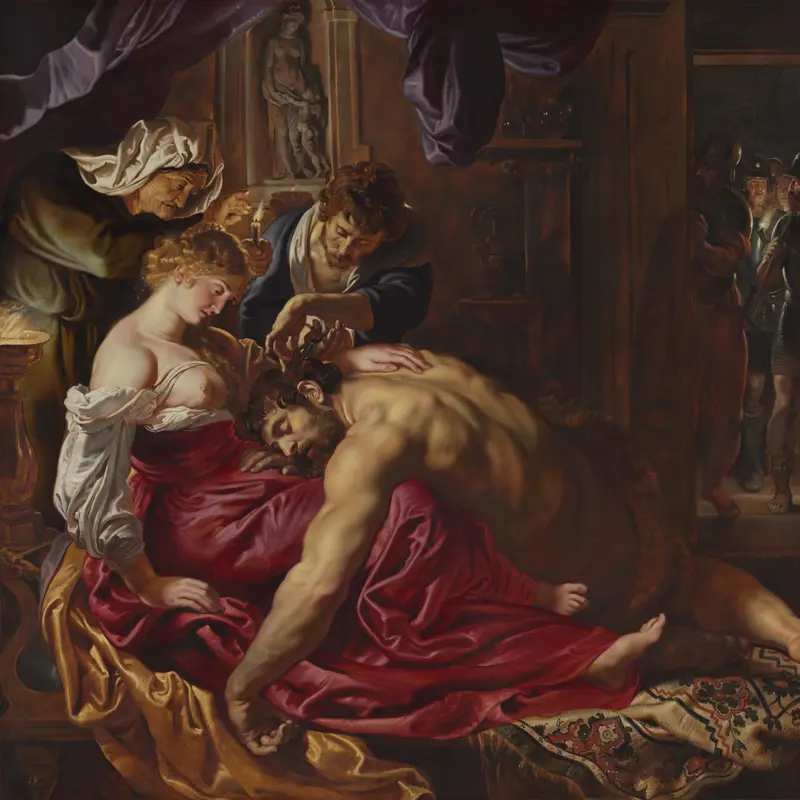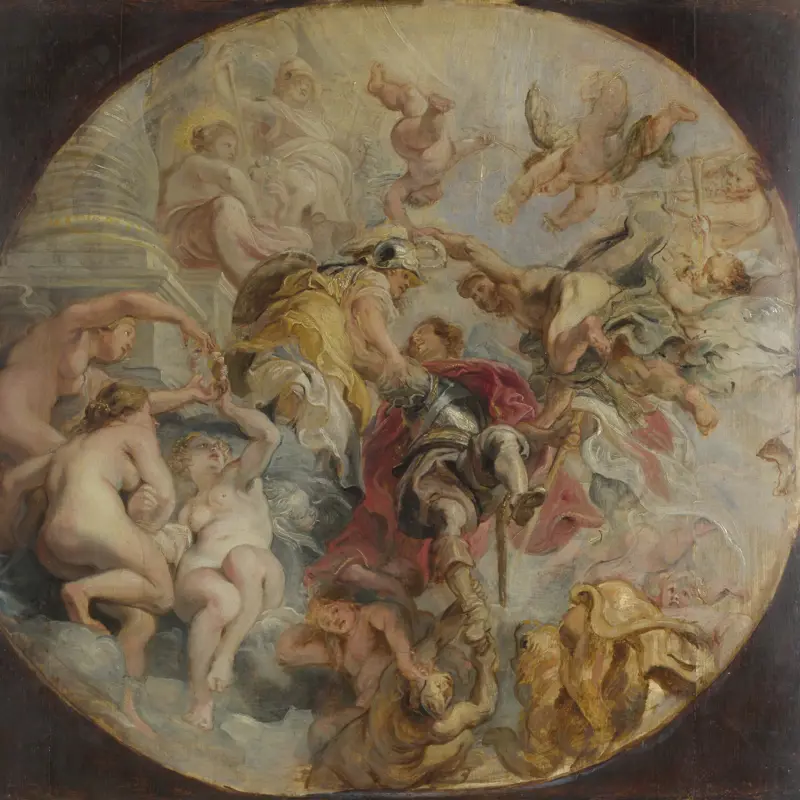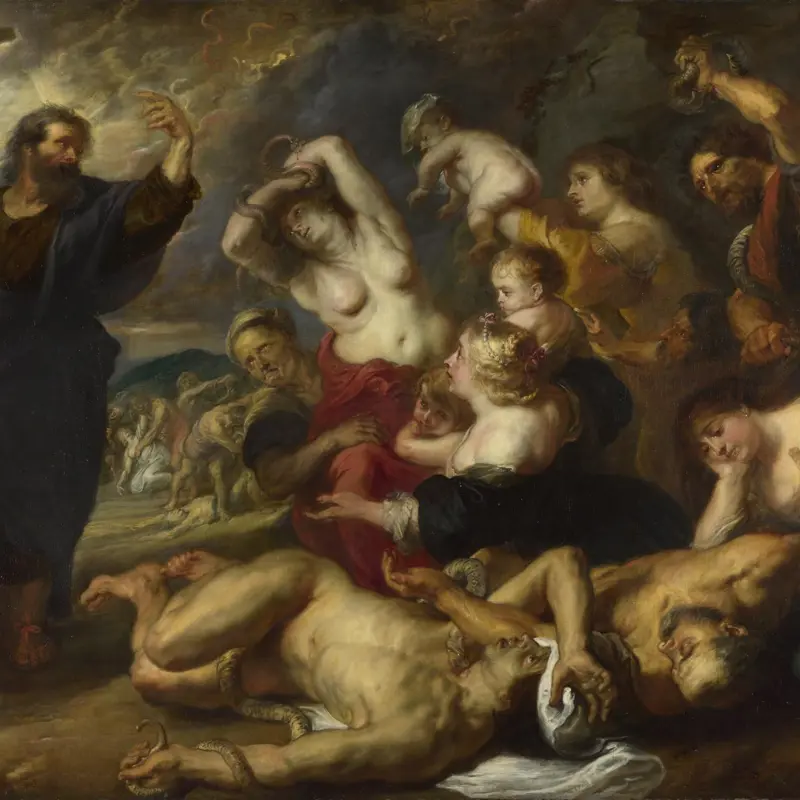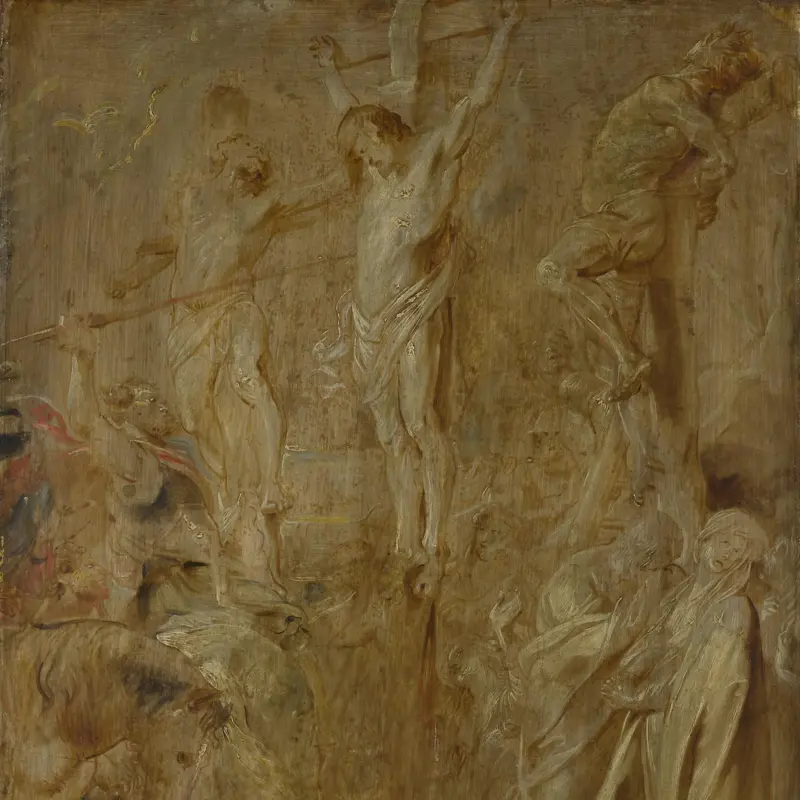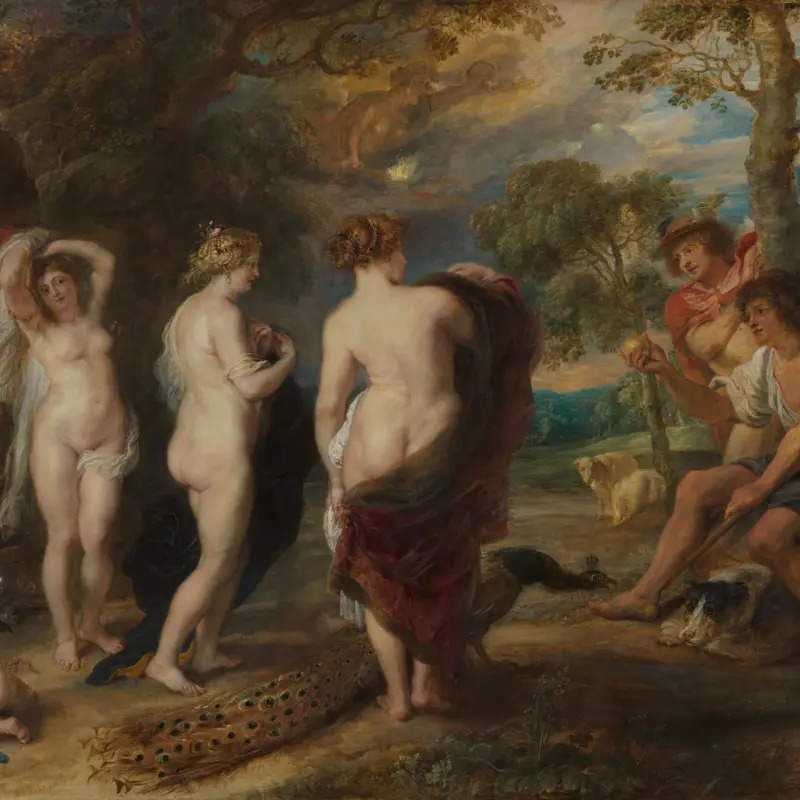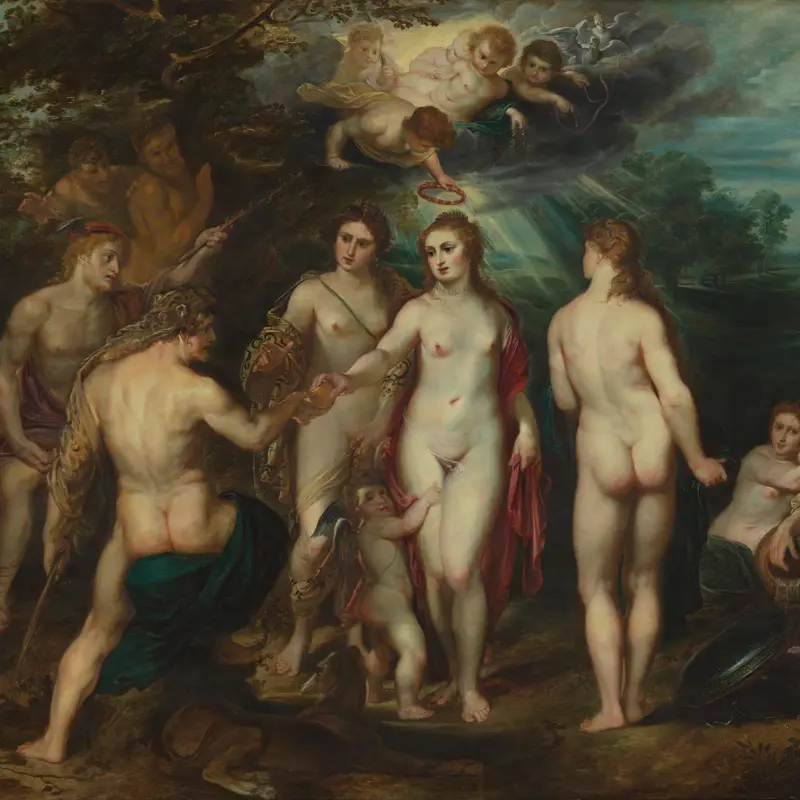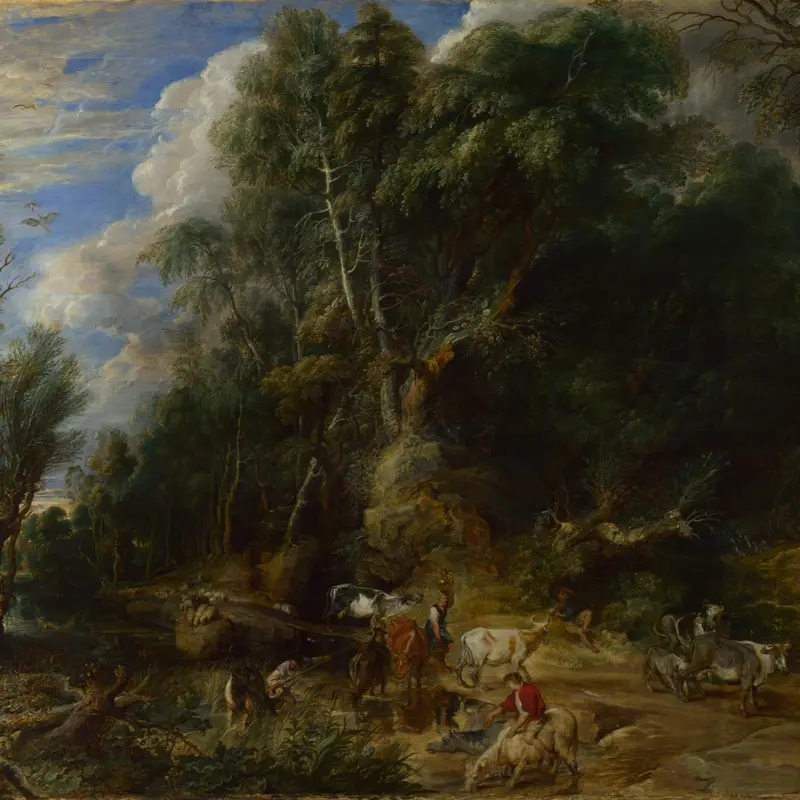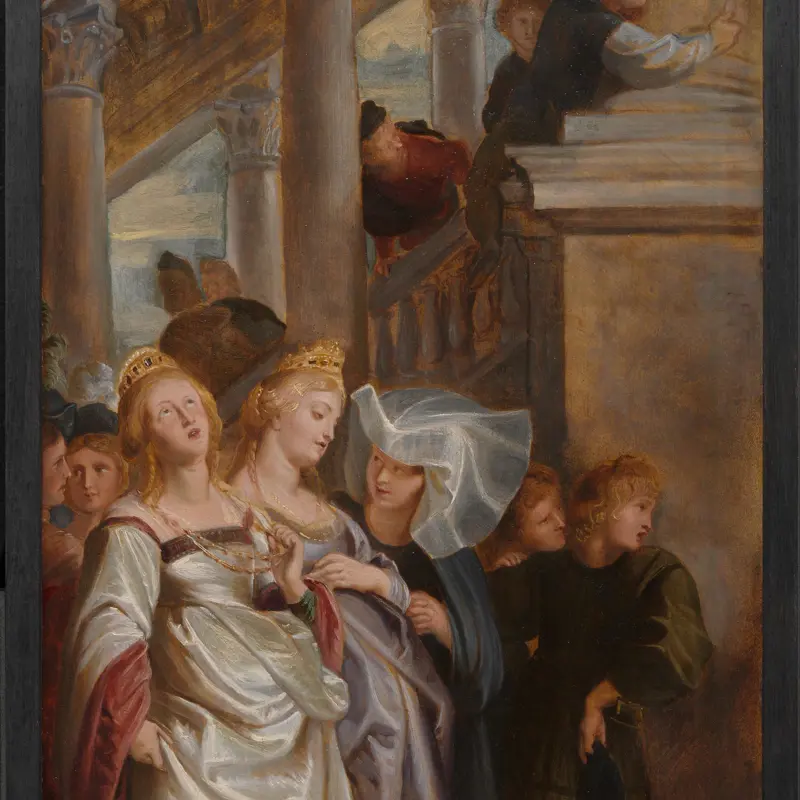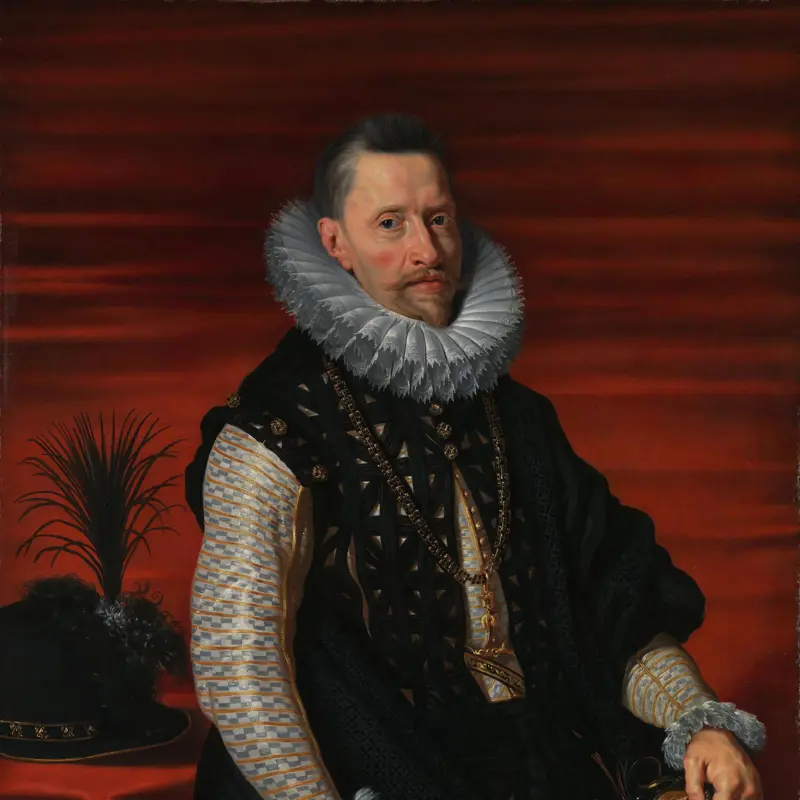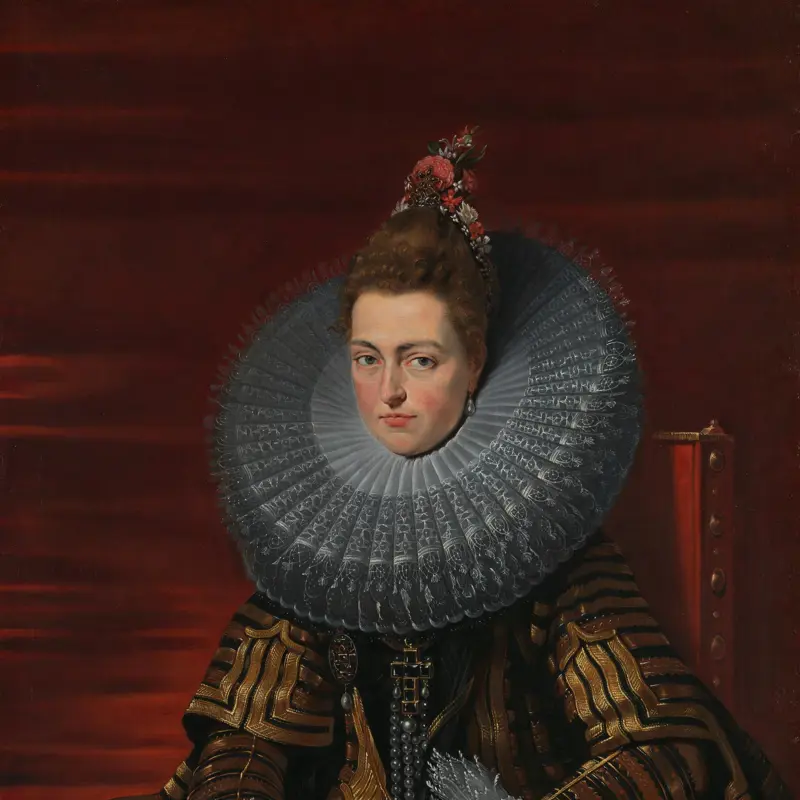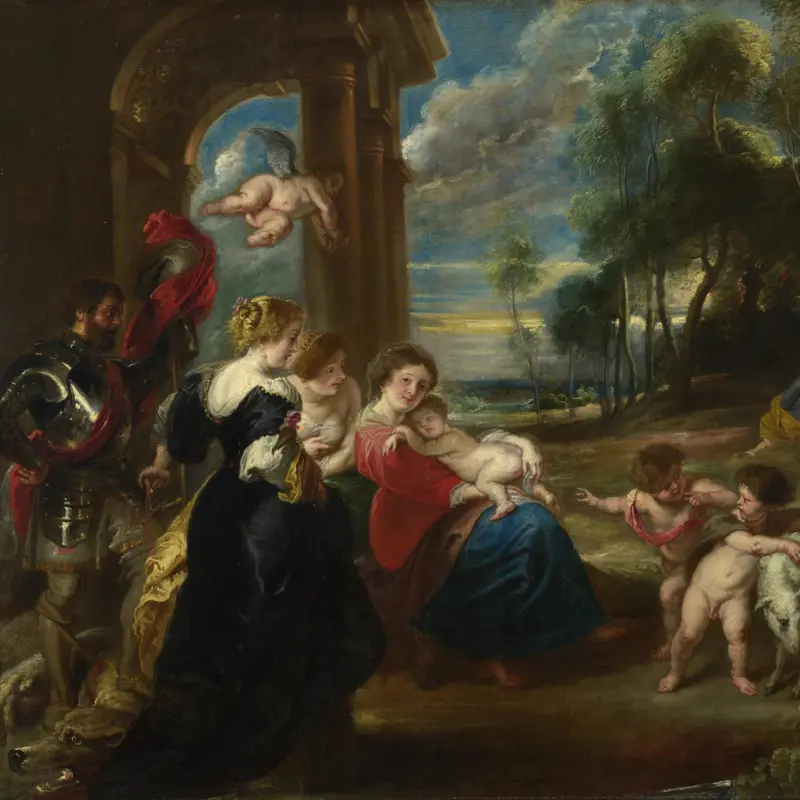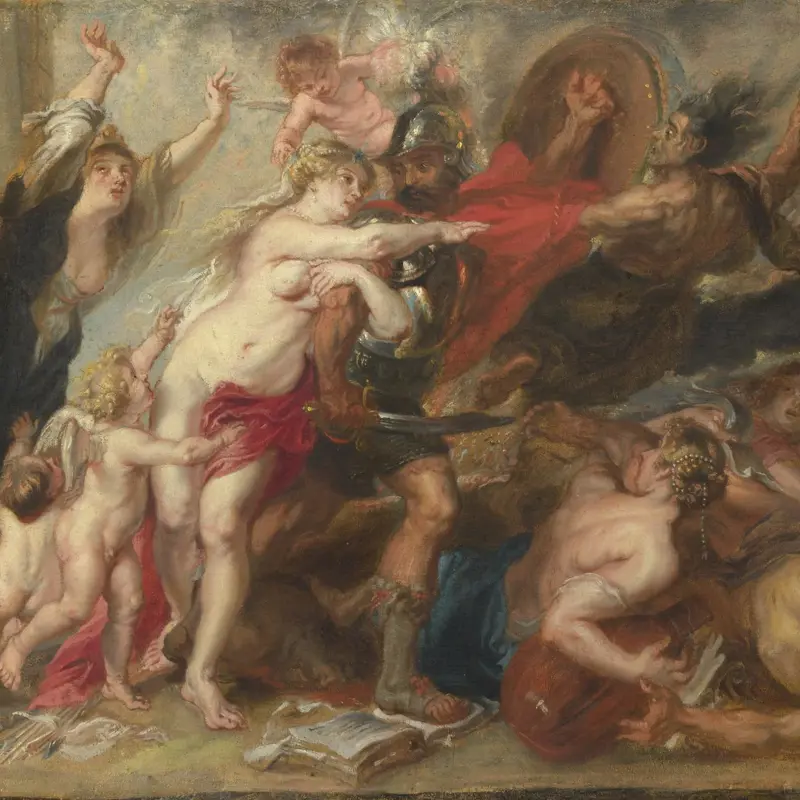Peter Paul Rubens, 'The Rape of the Sabine Women', probably 1635-40
About the work
Overview
The legend of the abduction of the Sabine women by the Romans is described by several classical writers. While accounts vary, key details are consistent: Romulus, founder and then king of Rome, had built an impressive city, but there was a shortage of women. He invited the Sabines, who lived in the mountains nearby, to bring their wives and daughters to a festival of chariot racing, intending to seize the unmarried women.
In this painting, Romulus is seated in silhouette. He points towards the women on the dais as a signal to his men to begin the abduction. The women reel back in distress, while in the foreground is a close-up view of the first victims being carried away. Rubens was clearly concerned to emphasise the violence involved, contrasting the dark, determined, muscular Romans with the pale-skinned, wide-eyed helplessness of the women. But he has also eroticised the moment – several of the women have their breasts already exposed, while a soldier lifts the skirts of another.
Key facts
Details
- Full title
- The Rape of the Sabine Women
- Artist
- Peter Paul Rubens
- Artist dates
- 1577 - 1640
- Date made
- probably 1635-40
- Medium and support
- oil on wood
- Dimensions
- 169.9 × 236.2 cm
- Acquisition credit
- Bought, 1824
- Inventory number
- NG38
- Location
- Room 18
- Collection
- Main Collection
- Previous owners
- Frame
- 19th-century English Frame
Provenance
Additional information
Text extracted from the ‘Provenance’ section of the catalogue entry in Gregory Martin, ‘National Gallery Catalogues: The Flemish School: circa 1600–circa 1900’, London 1986; for further information, see the full catalogue entry.
Bibliography
-
1986Martin, Gregory, National Gallery Catalogues: The Flemish School, circa 1600 - circa 1900, London 1986
-
2001
C. Baker and T. Henry, The National Gallery: Complete Illustrated Catalogue, London 2001
About this record
If you know more about this work or have spotted an error, please contact us. Please note that exhibition histories are listed from 2009 onwards. Bibliographies may not be complete; more comprehensive information is available in the National Gallery Library.

